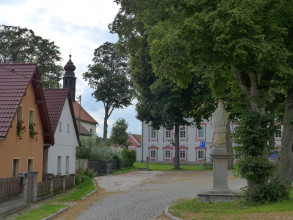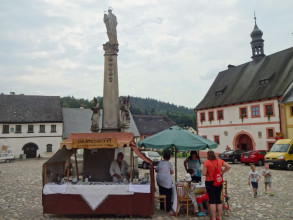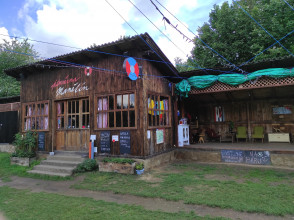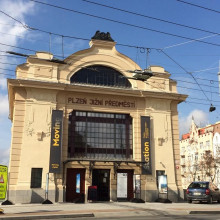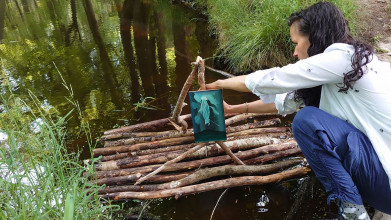Region
The Plzeň region is located in southwestern Bohemia and neighbors Bavaria. It is the third largest region in the country, yet the population density remains the second lowest. The regional capital of Plzeň is the fourth largest city in Czechia, but otherwise there are not many mid-sized and large cities. Plzeň is also the region’s cultural center. There are two universities, and the University of West Bohemia in Pilsen also operates the Ladislav Sutnar Faculty of Art and Design. Plzeň includes a number of theaters and theater troupes. It is also the seat of the Museum of West Bohemia, the Gallery of West Bohemia, the Gallery of the City of Pilsen and the university gallery of Ladislav Sutnar. The city also operates a number of multi-genre cultural institutions, such as the Papírna (concert hall, café, gallery, studios), Zastávka or DEPO2015.
Plzeň was chosen the European City of Culture in 2015, which helped activate its cultural potential across the region, and brought some rejuvenation and transformation of its cultural institutions. But after this temporary boost, many of the projects died down or transformed into smaller initiatives. Moving Station remains an important multifunctional center which is operated by the Johan society in the spaces of a renovated Pilsen train station. The support from the European City of Culture initiative made this community project into a professionally active institution. They mostly focus on theater production, but also delve into affiliated fields and always try to keep an educational dimension to their work. Apart from Pilsen and its environs, the region includes other notable counties: Klatovy, Domažlice, Rokycany and Tachov. Since 1989, Klatovy has been the home of the Galerie Klatovy / Klenová (formerly the Okresní galerie Klenová). The Museum and Gallery of North Pilsen in Mariánská Týnice near Kralovice is also an important cultural institution. Other activities are supported by smaller organizations, such as the Úterský Bart, Domaslav, Otisk or Pomozme si sami. The Plovárna Manětín cultural center is a small association focusing on the humanization of local culture, which however achieves regional impact. The Rašelina society has been a homeopathic force in the Šumava region, being a platform for art and taking care of local nature and the land. The Artmill art center has been active near Horažďovice, focusing on art and self-sustainability. The Propolis association in Chříč takes care of the Chříč brewery and organizes the annual multi-genre Křič Fest festival.
The renovation and upkeep of sacral sites in the areas formerly occupied by the German-speaking inhabitants is very important, and the region for example supports the project Západočeské baroko. Altogether, the region is still struggling with the expulsion of the former inhabitants and is trying to actively pick up on its original history. (Here we can mention for example the Zmizelé Sudety project of the Antikomplex society, as well as the joint project of the Centrum pro komunitní práci západní Čechy and the Centrum dalšího vzdělávání v okrese Cham – Znovuobjevené poklady Sudet.)
The Šumava National Park is one of the most important protected reservations (a part of it also stretches over territory of the Plzeň region), but there are other notable ones: Český les, Brdy, Křivoklátsko and Slavkovský les. The region includes a number of precious historical sites, and was the home of famous architect Jan Santini Aichel (Plasy monastery, Kladruby monastery). In the context of the Czech Republic, the region’s environment is generally less polluted (excepting Plzeň and the areas surrounding the D5 highway). The region’s ecological politics have had impact on the farmed land, whose total surface area is the second highest after the South Bohemian region. The education index is lower in the borderlands, as well as in the areas of Domažlice and Horažďovice. The intensity of cultural activity is surprisingly low in the counties around Plzeň, Nepomuk and Horažďovice. It is higher in the borderlands around Klatovy.
The region’s important ecological organizations are Evic, ČSOP Neurazy, ČSOP Vidice, ČSOP Manětínsko, Jsme částí Země association, Nepomucký ornitologický spolek, Vaváky, o.s., Ořešák - spolek pro ochranu přírody, Děti Země – Plzeň, Šumava sobě, o.s., Horní Berounka society, Jaderný odpad - děkujeme, nechceme!, Přátelé Šumavy society, Klub ochrany dravců a sov při sdružení Děti Země, Nadační fond Zelený poklad and the Občanské sdružení Aktivios.
